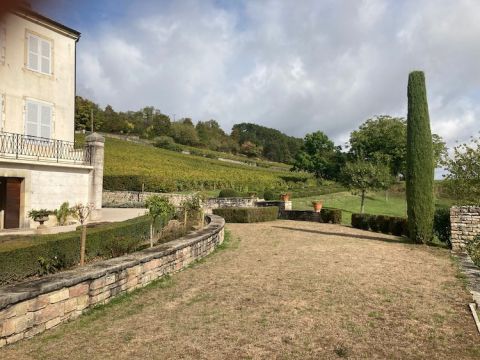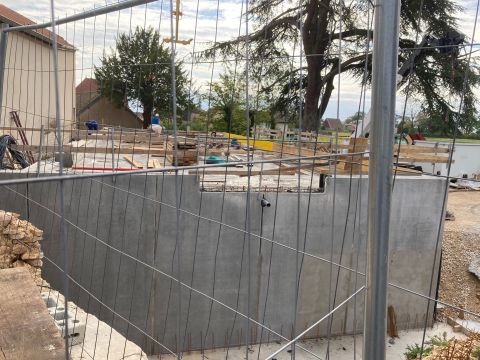For most French people who can afford it, the summer holiday is sacrosanct. Doubtless many visitors to JancisRobinson.com have encountered offices, shops and restaurants in France that were routinely closed for the entire month of August, long before COVID-19 came along.
France’s vignerons, however, are having to reshape their annual schedules. Late July is the latest they can safely go on holiday now that climate change is moving their harvest dates inexorably backwards. This year marked the earliest grape harvest ever in many important wine regions, including Burgundy. I wonder whether anyone is setting up summer camps for vintners' children?
In Burgundy this year the first grapes were picked on 12 August and by the third week of the month the harvest was well under way. It used to start a good month later. Domaine Michel Lafarge in Volnay is one of Burgundy’s most respected producers. The 2020 vintage ripened so much earlier than expected that the Lafarges didn’t have time to move the 2019s into their usual one-year-old-wine cellar after their break and before the new crop arrived. Sylvain Pataille got back from holiday on 24 August and had just four frantic days to prepare all of his winery and picking equipment and team before the start of his harvest in Marsannay at the northern end of Burgundy’s heartland, the Côte d’Or.
Marianne and Pierre Duroché in Gevrey-Chambertin, whose delicate red burgundies are all the rage in some quarters, had made plans to fly back from their holiday in Canada on 21 August. COVID-inspired flight cancellations at least saved them from being disastrously late for the start of their 2020 harvest.
The pandemic made an extraordinary vintage exceptional in other ways too. The picking teams had to be masked and socially distanced, and there was none of the usual end-of-harvest jollity. Pierre-Yves Colin-Morey (who bought a machine harvester a few years ago as insurance and has never actually used it) found many a laid-off restaurant worker keen to pick his grapes. Loïc Dugat of Domaine Dugat-Py described to me, during my recent visit to Burgundy taste the 2019s, how, instead of feeding everyone companionably inside, gloved employees issued the pickers with airline-style pre-packaged meals in the vineyard. At the end of harvest the team had to make do with an aperitif in the courtyard as celebration.
As Dugat (who now takes his holidays in December) pointed out, vignerons are having to get used to the fact that grapes ripen very much faster in the long, hot days of August than they do at the end of September. It’s vital, therefore, that they are picked quickly, so he has doubled his picking team from 30 to 60 for just 10 ha (25 acres) of vines. Guillaume d’Angerville of Volnay, on the other hand, halved his picking team to 20 this year because of COVID and was delighted to find that productivity was by no means halved. It takes only a week to pick his 15 ha (37 acres) of vines whereas it took two weeks in his father’s time.
In the hot, dry summers to which Burgundians are becoming accustomed the problem of sunburnt grapes continues to challenge growers who less than a generation ago struggled to ripen them. On arrival at the cellar the crop used to be sorted for grapes that had rotted in the rain. Now those at the sorting table need to pick out all the scorched grapes without an ounce of juice. Mid afternoon is when the risk of sunburn is highest, exacerbated if there are still vestiges of vine treatments on the grapes. (Most of the producers I spoke to were keen to stress that these treatments would be organic.)
One vintner was particularly thrilled with the quality of her 2020 grapes, and claims that, thanks to her specially high-trained, exceptionally leafy vines, none of hers were burnt and all of them were superbly healthy. Lalou Bize-Leroy of Domaine Leroy in Vosne-Romanée (pictured in her Vosne dining room above) is a leading practitioner of lunar-influenced biodynamic viticulture and describes her 2020 vintage as ‘great’ – even better than 2018 and 2019. Her 2020 alcohol levels are sometimes as high as 15% but she assured me that the wines are perfectly balanced. No one I met complained of low acid levels in either 2019 or 2020; the acid was concentrated along with the sugar in the small, sun-dried berries.
It is hardly surprising then that, although Lalou’s very unusual methods were initially ridiculed, more and more growers are starting to copy her for their most valuable vines. It is costly in terms of labour – she keeps a permanent vineyard staff of between 12 and 24 people to cosset her 22 ha (54 acres) of vines – but it does seem to yield results.
Last summer was not just hot but extremely dry – so dry that Denis Bachelet of Gevrey-Chambertin seemed in the depths of despair at the number of his older vines that had simply perished in the drought. It is usually young vines that are most at risk in dry summers because their roots have not had time to penetrate at all deeply into the soil, but this year both Bachelet and Jean-François Coche of Meursault were stunned by the effects of drought on their older vines. Unlike outside Europe, irrigating anything other than baby vines is banned in France. I naively asked Bachelet whether there was a move to ask the authorities for permission to irrigate. ‘Where would we find the water?’, he countered.
The vinifications were finished so early in September that wine producers are currently finding themselves unexpectedly idle – not least because COVID has dramatically shrunk the number of visitors expected during the usually busy autumn tasting season. Vintners are now doing the sort of maintenance jobs they used to do in the depths of winter.
Presumably the dry summer was at least appreciated by the bevy of builders I saw during my time in Burgundy. The tiny village of Morey-St-Denis has been invaded by those building new cellars for Bernard Arnault at Clos des Lambrays, for François Pinault at Clos de Tart and for the Seysses family at Domaine Dujac. In Gevrey-Chambertin the landscape is dominated by the crane for the Rousseaus’ brand new cellar and the giant stack of portacabins needed to direct reconstruction of Domaine Rebourseau for yet another prominent French businessman, Martin Bouygues. Arnault, Pinault and Bouygues all bought into fashionable, but changing, Burgundy in the last six years. I wonder whether their staff did full analyses of the likely effects of climate change before they invested their millions?
The Burgundian wine calendar old and new
Bottling of the previous vintage is usually some time between December and April.
| 20th century | 21st century | |
| January | Pruning | Burgundy Week in London (but not in 2021) |
| February | Vineyard maintenance, pruning | Sales trips (but probably not in 2021) |
| March | Odd jobs, perhaps last of pruning | Pruning (as late as possible to delay budburst); first buds appear, plant new vines |
| April | First buds appear, plant new vines, ploughing | Frost alert and protection, tidying the shoots |
| May | Frost alert and protection, tidying the shoots | Frost alert and protection. Vines bloom end of the month |
| June | Vines bloom, tidying the shoots, treatments to protect from pests and disease | Tidy up the shoots, trim excess foliage, treat vines to protect them from pests and disease |
| July | Continue treatments, trim excess foliage | Trim and treat vines, irrigate new vines. Sunburn protection. Short holiday? |
| August | Holiday. Trim excess foliage and prepare for harvest at the end of the month | Grape harvest |
| September | Grape harvest | Winemaking |
| October | Winemaking, pull out old vines | Odd jobs, pull out old vines |
| November | Show visitors the previous vintage | Plant new vines. Receive visitors usually (odd jobs in 2020) |
| December | Ploughing round dormant vines in which the sap has fallen | Worry that warmer winters weaken the soil and fail to give the vines a valuable winter sleep |
















